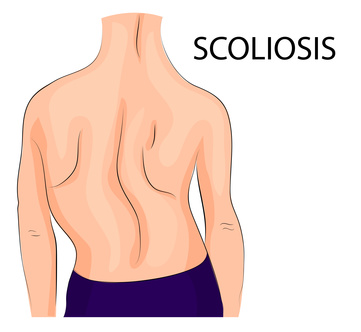According to National Scoliosis Foundation, an estimated 6 to 9 million people in the U.S., or 2 to 3 percent of the country’s population, is affected by scoliosis, a condition characterized by sideways curvature of the spine. Not too long ago, the condition was difficult to diagnose and the treatment options where less than optimal. Today, medical advancements have enabled early detection of scoliosis, paving the way for timely and effective treatment. This blog covers some of the major breakthroughs that are responsible for the change.

See Video: https://www.youtube.com/watch?v=NNETS-Aj1hc
Treatment of Scoliosis in Children
During the initial stages of treatment, children with symptoms of scoliosis are examined at regular intervals, to check whether the curve is worsening. If there’s any aggravation in the curvature, orthopedic surgeons may recommend a brace. Unlike the braces in the past, present day braces come in customizable shapes to offer optimum comfort to patients. In addition, there are many minimally invasive procedures and special exercise techniques to train the spinal muscles and the slow the progression of the curve.
Treatment of Scoliosis in Adults
Contrary to common notion, spine deformity in the form of scoliosis is not limited to children; it can affect adults too. Generally, adult scoliosis is a manifestation of childhood curvature that remains untreated. However, adults with no history of childhood scoliosis can develop degenerative scoliosis. Some of the common treatment options for this condition in adults include back braces, physical therapy, and spinal injections with surgery being a last resort.
Read Related: All You Need to Know About Scoliosis Spinal Fusion Surgery
Surgical Intervention
Not every scoliosis patient is a candidate for surgery. In most cases, the curvature of the spine is minor and doesn’t cause any pain. However, progressing deformity in curvature, accompanied by pain and disability, may warrant surgical intervention. Surgeons recommend surgery only as a last resort. Over the last decade, advancements in healthcare technology have been instrumental in enabling surgeons to stabilize and correct spinal curves through minimally invasive procedures, like robotic spine surgery.
Wrap Up
If you or a loved one in the family has been diagnosed with scoliosis, don’t procrastinate seeking an expert’s advice. Contact a spine care specialist for the best possible course of action and weigh all the risks and benefits of different treatment options in order to make an informed decision. Whether you are in Plano, Texas, or any other part of the country, you can simply search the web for a physician referral center that can connect you with an experienced spine specialist in your area.